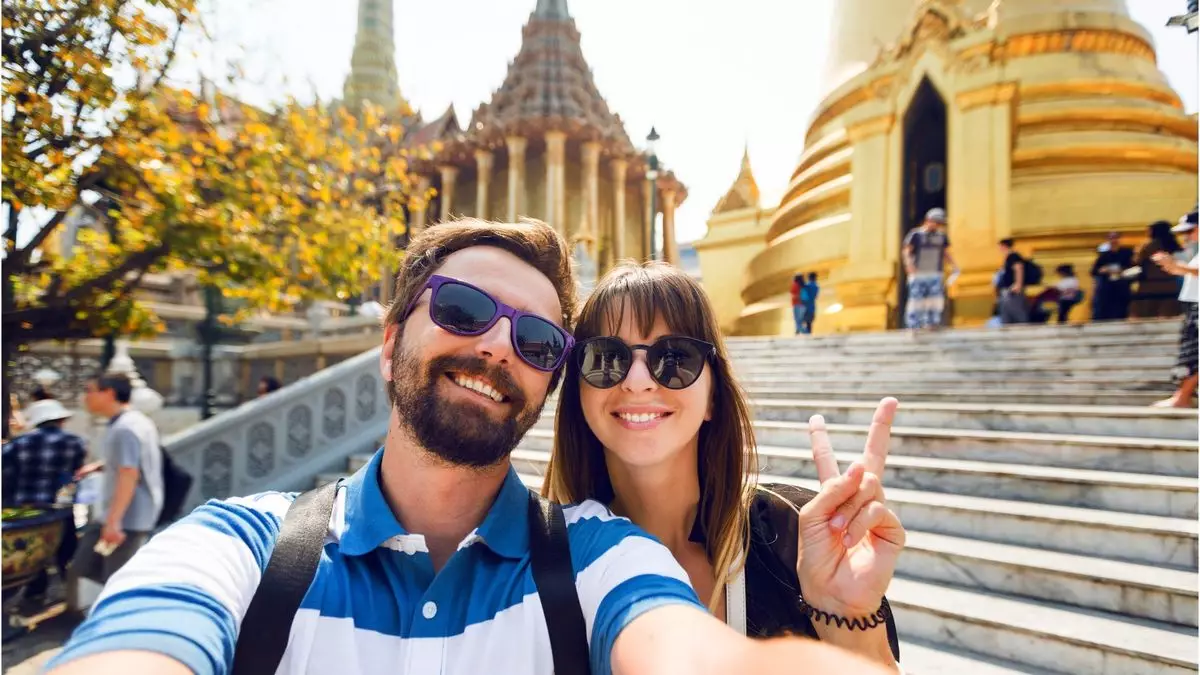The tourism landscape in Asia has undergone drastic changes following the COVID-19 pandemic. One of the most notable effects has been felt in popular tourist destinations like Angkor Wat in Cambodia, a UNESCO World Heritage Site renowned for its historical and cultural significance. Once teeming with visitors, the complex now grapples with a stark decline in ticket sales, currently reported at just 45% of pre-pandemic levels. This scenario is primarily due to the absence of Chinese tour groups, a major source of tourists, who traditionally flocked to Angkor Wat and other regional sites. The intricate web of factors leading to this decline highlights the fragility of the tourism industry, which remains vulnerable to global events.
As nations continue their recovery from the pandemic, certain Asian markets have been slower to recuperate compared to their counterparts. Many of these countries, such as China, Japan, and South Korea, have faced challenges ranging from delayed international reopenings to currency fluctuations affecting travel costs. These economic conditions have encouraged travelers to seek closer destinations, further impacting the number of visitors to far-flung locales like Cambodia. The ramifications of these decisions are significant for the Southeast Asian tourism sector, which relies heavily on international travel, particularly during peak seasons like sunrise at Angkor Wat.
Historically, outbound tourism from Asian nations has been dominated by travelers from China, Japan, and South Korea, with Chinese tourists leading the charge. However, the COVID-19 pandemic has caused a major shift in these travel behaviors. According to recent statistics from DidaTravel, bookings for travel from China to Japan have seen a remarkable year-over-year increase of 200%. South Korean travelers have also been opting for nearby attractions, leading to a 65% rise in travel from Korea to Japan. This trend depicts a significant change in travel habits, as these markets adjust their itineraries according to current travel realities.
Japan itself faces specific challenges that stifle a full return to pre-pandemic travel patterns. The weak yen has substantially affected the cost of international travel for Japanese citizens, making trips abroad feel prohibitively expensive. This economic dynamic contrasts sharply with other countries where currency devaluation presents an opportunity for inbound tourism. Whereas Chinese tourists flock to Japan to capitalize on favorable shopping conditions, the outbound dynamics reflect caution influenced by economic stability.
In light of these challenges, many populations within Asia are focusing on domestic travel. Companies like China Youth Travel Service highlight this trend of prioritizing local or nearby destinations due to affordability issues associated with long-distance travel. The reluctance to travel farther stems from the overall economic uncertainties that plague many regions. As international travel slowly rebounds, a significant percentage of travelers are currently gravitating toward their own national sites, reinforcing local economies until global travel fully resumes.
As domestic travel flourishes, certain segments of the Southeast Asian market are witnessing a surge in bookings from English-speaking travelers. Regions such as Vietnam, Thailand, and Cambodia are drawing attention as ideal travel destinations for those seeking authentic experiences. Majors in the industry such as Alexander + Roberts report a 41% increase in bookings to Asia for 2024 compared to the previous year, illustrating a positive shift in the perception and appeal of these regions. Nonetheless, there remains a complexity concerning different tourist demographics, particularly between Western and Asian travelers.
Luxury travel has not remained untouched by these dynamic shifts either. Although the weaker yen may present opportunities for some visitors, the prices in high-end sectors, including accommodations and services, have escalated considerably. As luxury travelers seek value, companies must adapt to these changing expectations without compromising quality. This is crucial, particularly as travelers become more discerning, looking for bargains on experiences while scrutinizing the cost of luxury services.
Moreover, an emerging trend post-pandemic involves travelers opting for multi-destination packages rather than one-off trips. This tendency to book interconnected experiences allows visitors to explore various countries such as Vietnam, Cambodia, Thailand, and further extend their journeys to places like Japan and Nepal. This new pattern suggests that tourists are more inclined to curate their travel experiences and take advantage of extended stays in multiple locales to maximize value, demonstrating flexibility and a desire for richer travel experiences.
Asian tourism is slowly finding its footing in the post-pandemic landscape, yet the path to recovery is rife with challenges. The influence of economic conditions, evolving traveler behaviors, and shifting destination preferences are reshaping the future of travel in this vibrant region. As travel providers adapt to these realities, the potential for revival hinges on understanding and responding to the nuanced needs of both domestic and international travelers. The ongoing fluctuations in travel dynamics offer an intriguing glimpse into the evolving world of tourism and the resilience of an industry rooted in cultural exploration.


Leave a Reply